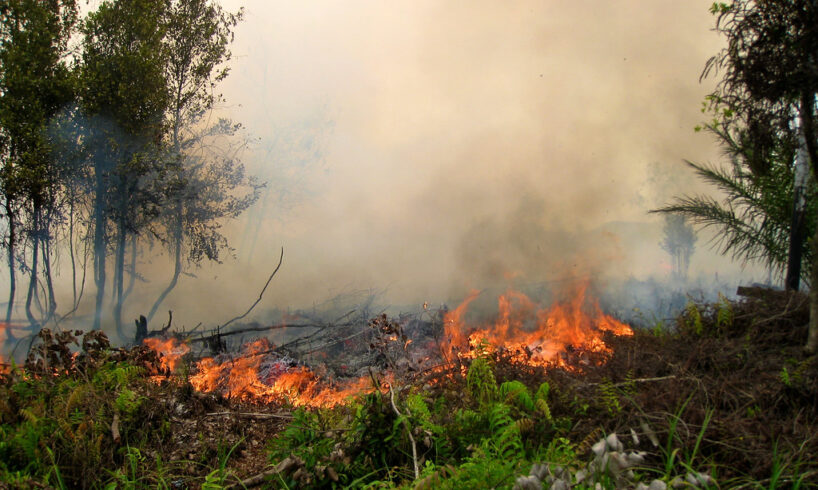
People living in the western U.S. have been concerned about wildfires for a long time, but the past two years have left many of them fearful and questioning whether any solutions to the fire crisis truly exist.
The Dixie Fire in the Sierra Nevada burned nearly 1 million acres in 2021, including almost the entire community of Greenville, California. Then strong winds near Lake Tahoe sent the Caldor Fire racing toward homes, forcing the evacuation of tens of thousands of people – including one of us. They followed destructive wildfires in 2020 in California, and Colorado and Oregon also saw devastating fires in the past two years.
As foresters who have been working on wildfire and forest restoration issues in the Sierra Nevada for over a quarter of a century, the main lesson we gather from how these fires have burned is that fuels reduction and forest restoration projects are our best tools for mitigating wildfire impacts amid a changing climate, and not nearly enough of them are being done.
A new 10-year plan announced by the U.S. Forest Service in early 2022 aims to change that. It outlines an ambitious strategy, but Congress will now have to follow through with enough funding to carry it out.
Fuels reduction projects can work
The Dixie and Caldor fires provided evidence that forest fuels reduction projects can work.
The fires spread quickly over vast areas, but both burned less severely in areas with proactive forest restoration and fuels management projects, including near South Lake Tahoe and near Quincy.
Fuels reduction projects include thinning out trees, burning off woody debris and reducing “ladder fuels” like small trees and brush that can allow fire to reach the tree canopy. Forest restoration projects focus on forest structure, density and composition as well as reducing fuels.
These projects create more open forests that are less likely to fuel severe megafires. They also create strategic areas where firefighters can more easily fight future blazes. And because fires burn less intensely in thinned forests, these projects leave more intact forest after a fire for regenerating new trees and sequestering carbon.
A new 10-year plan
The Forest Service’s new 10-year plan sets a goal to treat as much as 50 million additional acres across the West over 10 years, just under 80,000 square miles. For comparison, the Forest Service treats around 2 million to 3 million acres a year now.
The first priorities in the plan are high-risk areas where communities have been threatened by out-of-control fires, including in the Sierra Nevada in California, the eastern side of the Rockies in Colorado and parts of the Pacific Northwest and the Southwest.
The Forest Service already has a “shared stewardship” agreement with California, reached in 2020, aiming to treat 1 million acres annually by 2025. Though, research indicates that current levels of treatment are closer to 30% of that million-acre goal. Remember that 1 million acres is about how much the Dixie Fire burned.
A lingering question is how the 10-year plan will be paid for, considering that it will require a workforce larger than the U.S. has seen in decades.
So far, Congress has approved additional funding through the 2021 infrastructure bill, which included about $655 million a year for fire management for five years. That’s in addition to the Forest Service’s annual funding for this work, which was about $260 million this fiscal year.
But in California alone, a group of scientists, land managers and former government leaders has recommended spending $5 billion a year on proactive management, roughly equivalent to what was spent to suppress fires in the state in 2020. Known as “The Venado Declaration,” this proposal, championed by former Gov. Jerry Brown and former Cal Fire Director Ken Pimlott, calls for addressing forest resiliency on every acre and acknowledges that more than just funding is needed. It also discusses building infrastructure and a workforce and reevaluating regulatory barriers.
Four key steps
To manage fires in an era of climate change, when drier, hotter weather creates ideal conditions for burning, experts estimate that the area treated for fuels reduction needs to increase by at least an order of magnitude. We believe government needs to accomplish these four things to succeed:
1) Drastically increase funding and staff for agencies’ fuels reduction projects, as well as outreach, cost-sharing and technical assistance for private forestland owners. The new plan is a good start. Funding more federal and state agency positions would add forest restoration capacity for the long term. The Biden administration’s proposal for a Civilian Climate Corps could also bring in more young workers.
2) Reduce regulations on forest and fuels management efforts for both public and private land. While California and the federal government have made recent strides to streamline regulations, land management agencies need to acknowledge the biggest risk is doing nothing. Agencies need to plan larger restoration projects and drastically cut the time needed to implement them.
3) Invest in communities’ capacity to carry out local forest restoration work by providing long-term support to local organizations that provide outreach, technical assistance and project coordination services. Funding restoration through competitive grants makes development of long-term community capacity challenging at best. The new plan’s inclusion of state, tribal and private lands is an opportunity for partnerships.
4) Provide funds and financial incentives for at-risk communities to retrofit homes to withstand wildfires and reduce fuels around homes, communities and infrastructure.
Amid a changing climate, we will have to learn to coexist with wildfires in the U.S. West. This will require concerted action and a cultural shift in how we view and manage our forests and communities to be resilient.
This article was originally posted on New federal wildfire plan is ambitious – but the Forest Service needs more money and people to fight the growing risks